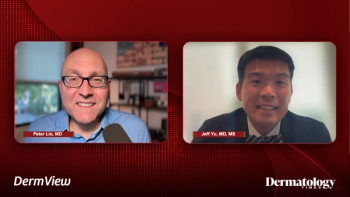
Designing the Ideal Topical: Relieving Itch and Improving Quality of Life
Panelists discuss how an ideal topical for widespread psoriasis—including scalp and sensitive areas—would be a single, nonsteroidal, well-tolerated agent with steroidlike efficacy, capable of supporting both proactive flare prevention and rapid itch relief while improving adherence, quality of life, and long-term disease control.
Episodes in this series

The clinicians discussed what features would define an ideal topical treatment for psoriasis affecting the entire body, including the scalp. A key priority was having a single product effective on both hair-bearing and non–hair-bearing areas, reducing the need for multiple prescriptions. Additionally, the ideal treatment would be a nonsteroidal agent, as the current market is saturated with steroid-based products repackaged in new vehicles. These agents, although effective, are not suited for long-term maintenance due to potential adverse effects, and many patients remain hesitant about chronic steroid use. Thus, a potent, well-tolerated, nonsteroidal therapy with efficacy comparable to steroids would be a significant advancement, especially if it supports both acute flares and long-term disease control.
They emphasized the importance of proactive rather than reactive management of psoriasis. Studies show that intermittent use of a topical agent, even when the skin appears clear, significantly reduces the number and severity of flares over time. This strategy not only improves physical symptoms but also addresses the psychological burden patients face, especially the anxiety around unpredictable breakouts. Quality of life is deeply affected in psoriasis, even when the disease involves a small body surface area. For example, patients with scalp psoriasis may experience social embarrassment because of visible flakes or chronic itch, which disproportionately impacts their daily lives despite limited lesion coverage.
Finally, they discussed how itch—especially in scalp and genital psoriasis—is often underestimated in psoriasis management. For many, itch is a major source of discomfort and contributes to disease worsening due to scratching-induced trauma (Koebner phenomenon). Therefore, an ideal topical would not only clear lesions but also provide fast, lasting itch relief without causing stinging or irritation, especially in sensitive or damaged areas. The goal is to create a simple, effective, and tolerable treatment that patients can use confidently for long-term disease control.
Newsletter
Like what you’re reading? Subscribe to Dermatology Times for weekly updates on therapies, innovations, and real-world practice tips.















